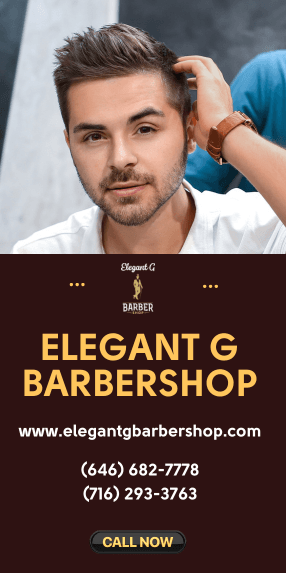Getting a fresh haircut is an exciting experience, but it’s important to take the right steps afterward to ensure your hair stays healthy and vibrant. Whether you’ve just visited a barbershop in New York or received a trim from a trusted barber, following these tips will help maintain your hair’s quality.
1. Wash Your Hair Regularly but Not Too Often
Washing your hair is an essential part of maintaining its health and cleanliness, but overdoing it can cause unintended damage. Your scalp produces natural oils that keep your hair moisturized and protected. Washing your hair too frequently can strip these oils, leaving your hair dry, brittle, and prone to breakage. Striking the right balance is key—typically, washing your hair 2–3 times a week works well for most people, though this can vary depending on your hair type and lifestyle. For instance, individuals with oily hair or those who exercise daily may need slightly more frequent washing, while those with dry or coarse hair might find that washing less often helps retain the scalp’s natural moisture.
When choosing the best shampoo, it’s important to opt for one formulated for your specific hair needs. For example, if you have oily hair, look for clarifying shampoos that cleanse the scalp thoroughly. For dry or damaged hair, hydrating shampoos with ingredients like aloe vera, argan oil, or shea butter can work wonders. Avoid shampoos containing harsh chemicals, such as sulfates and parabens, as these can irritate your scalp and weaken your hair. Instead, aim for products with natural, nourishing ingredients that promote hair health. Additionally, use lukewarm water when washing your hair—water that’s too hot can dry out your scalp and damage your hair strands over time.
2. Use a Deep Conditioning Treatment
Deep conditioning treatments provide your hair with an intensive dose of hydration and nutrients, making them an excellent follow-up after a haircut. Whether you’ve opted for a short crop, long layers, or something in between, this step can make a significant difference in maintaining both the look and feel of your freshly trimmed hair. Haircuts, while beneficial for removing damaged ends, can sometimes leave strands craving additional moisture—especially if you’ve previously dealt with dryness, heat damage, or chemical treatments.
Deep conditioners work by penetrating the hair shaft more deeply than regular conditioners, replenishing lost moisture and restoring elasticity, shine, and softness. To use a deep conditioning treatment, apply it to damp, freshly washed hair. Focus primarily on the mid-lengths to the ends, as these areas are generally more prone to dryness and damage than the roots. Leave the product in for about 15-20 minutes, or for the time specified on the label, to allow the nutrients to absorb fully. For an enhanced effect, you can wrap your hair in a hot towel or use a shower cap, as heat opens up the hair’s cuticles and allows the treatment to sink in more effectively. If possible, incorporate this step into your routine once a week to see noticeable improvements in your hair’s texture and overall resilience.
For those with chemically treated or extra-dry hair, consider using masks containing argan oil, coconut oil, or keratin-infused formulas for added repair and protection. While applying a deep conditioning treatment isn’t an everyday necessity, it can become a game-changer for maintaining healthy, vibrant hair between trims.
3. Don’t Skip Hair Oil
Hair oils are some of the most versatile and beneficial products you can include in your post-haircut care regimen. They are particularly effective at preventing issues like frizz, dryness, and split ends, while also enhancing your hair’s natural shine and moisture balance. Incorporating a high-quality hair oil immediately after a fresh cut ensures your strands remain well-nourished and protected as they grow out.
To use hair oil effectively, start with just a few drops—typically, 2–4 drops are sufficient, but you can adjust the amount depending on your hair length and texture. Warm the oil between your palms and apply it to clean, slightly damp hair, focusing on the ends where dryness and splitting are most common. You can also work the oil up towards the mid-lengths of your hair, but avoid applying too close to your roots unless you have an extremely dry scalp, as this can lead to hair looking greasy.
When choosing hair oil, it’s important to consider your hair type and individual needs. Lightweight oils like argan oil and sweet almond oil are great for normal to fine hair, as they won’t weigh it down. For thicker or coarser hair, heavier options like coconut oil or castor oil can provide deeper nourishment without feeling overly greasy. For maximum effectiveness, look for oils enriched with vitamins and antioxidants, such as vitamin E or jojoba oil, which help promote scalp health and strengthen hair.
Hair oil can also double as a great finishing product to tame flyaways and enhance shine. Whether you apply it as part of a daily styling routine or as a weekly treatment, this step can leave your hair looking glossy, soft, and luxurious. Over time, using hair oil consistently will improve your hair’s overall strength and elasticity, helping it retain its smooth and polished appearance long after your haircut.
4. Be Gentle When Drying Hair
After a fresh haircut, it’s natural to want your hair to look its best right away, but one common mistake people make is vigorously rubbing their hair with a towel to dry it. While this may seem like a quick way to get rid of excess moisture, this rough treatment can actually cause significant damage to your hair. The friction from aggressive towel drying can disrupt the hair cuticles, leading to frizz, tangles, and even breakage over time. Instead, it’s much better to use a gentle blotting or patting technique. Take a soft, microfiber towel or a cotton T-shirt and carefully press it against your hair to absorb moisture without pulling or tugging at the strands.
If possible, allowing your hair to air dry is one of the healthiest ways to ensure it stays smooth and damage-free. Air drying eliminates exposure to heat, which can weaken your hair’s texture and lead to dryness over time if overused. However, if you’re short on time and need to use a blow dryer, it’s important to take protective steps to minimize the risk of heat damage. Always use the dryer on its lowest heat setting to avoid stressing your hair, and keep the nozzle at least a few inches away from your scalp to prevent drying out your roots. For those with long or thick hair, using a diffuser attachment on the dryer can help distribute heat more evenly and protect your hair while achieving defined, frizz-free results.
5. Trim Your Hair Regularly
Regular trims are an essential part of maintaining healthy hair, even if you’ve recently had a haircut. Many people believe they can skip trims after a fresh cut, but allowing too much time to pass between appointments can result in split ends forming. Split ends, if left unaddressed, can travel farther up the hair shaft, leading to overall breakage and creating a lackluster appearance. By trimming your hair every six to eight weeks, you can prevent split ends from becoming a concern while promoting healthier hair growth in the long run.
Scheduling regular trims does not mean sacrificing your desired hairstyle. These trims are typically designed to refresh your existing look by removing damaged ends while keeping your overall style intact. Even if you’re growing your hair out, regular maintenance trims ensure that your ends stay strong and healthy throughout the process. For those in the New York area, visiting a trusted barbershop or your regular barber in New York can be a dependable way to keep your hair in top shape. Experienced professionals can help you maintain your haircut with precision while preventing common issues like excessive thinning or uneven growth.
6. Protect Your Hair from Heat Styling
Heated styling tools such as straighteners, curling irons, or blow dryers can help create sleek, polished looks or glamorous curls, but overuse can take a toll on your hair’s health. High heat can weaken the protein structure of your hair, causing it to become dry, brittle, and more prone to breakage. To protect your hair from damage, it’s crucial to limit the use of heated tools whenever possible. Instead, try experimenting with heat-free styling methods, such as braiding damp hair for natural waves or using foam rollers to achieve volume and curls without the risk of heat damage.
When you do choose to use heat styling tools, preparation is key. Begin by applying a quality heat protectant spray or cream to your hair. Heat protectants create a barrier that shields your hair from direct heat exposure and helps retain moisture, reducing the risk of dryness or split ends. Make sure to distribute the product evenly across your hair, especially toward the ends which are more vulnerable to damage.
Additionally, pay attention to the temperature settings on your styling tools. Many devices allow you to adjust the heat level—opting for a medium or lower setting is often sufficient to achieve your desired results without unnecessary damage. Take the time to section your hair and work with smaller strands to ensure even styling, minimizing the amount of heat each section is exposed to. By following these steps, you can protect your hair and maintain its health while still enjoying the versatility and beauty of heat-styled looks.
7. Maintain a Healthy Diet
Healthy hair begins with a balanced and nutritious diet that fuels your body from the inside out. The health of your hair is directly connected to the nutrients you consume, so making mindful dietary choices is essential. Key vitamins and minerals, including vitamins A, C, D, and E, biotin, iron, zinc, and omega-3 fatty acids, all play an important role in promoting hair growth and strength. Vitamin A helps stimulate the production of sebum, which moisturizes the scalp, ensuring your hair stays hydrated. Vitamin C is equally important, as it aids in collagen production and improves iron absorption, both of which are necessary for strong, resilient hair strands.
Biotin, also known as vitamin B7, is a standout nutrient often associated with hair health. It supports keratin production, the primary protein that forms hair structure, making it vital for hair strength and growth. Omega-3 fatty acids are another key component, as they help nourish hair follicles, promote a healthy scalp, and prevent dryness and brittleness. To incorporate these nutrients, aim to eat a variety of colorful fruits and vegetables, lean proteins like chicken and fish, nuts, seeds, and whole grains. Foods such as sweet potatoes, spinach, salmon, eggs, avocados, and berries are particularly beneficial for hair health. Keeping your body hydrated by drinking plenty of water throughout the day also supports the health of your hair. Consistently fueling your body with these essential nutrients will allow you to maintain vibrant, strong, and healthy hair.
8. Protect Your Hair from Sun Damage
Your hair, just like your skin, is vulnerable to the damaging effects of the sun’s UV rays. Overexposure to sunlight can weaken the hair’s structure, leading to dryness, faded color, and brittle strands. Prolonged sun exposure can also dehydrate your scalp, reducing its ability to produce the natural oils that keep your hair nourished and healthy. To prevent this damage, taking proactive measures whenever you’re outdoors is vital.
One of the easiest and most effective ways to shield your hair from the sun’s harmful rays is to wear a wide-brimmed hat or a scarf over your hair. Not only does this provide immediate physical protection, but it can also help protect your scalp from sunburn. Additionally, there are hair products specifically designed with UV protection. Consider using leave-in conditioners, sprays, or serums that include SPF to create a protective barrier against ultraviolet rays. These products can help preserve your hair’s moisture and prevent the sun from stripping away essential oils. It’s also important to minimize direct sun exposure during peak hours, typically from late morning to mid-afternoon. After spending time outdoors, a deep-conditioning treatment or a restorative hair mask can help replenish moisture and repair any potential damage caused by sun exposure. By incorporating these simple yet effective steps, you can maintain healthy, sun-protected hair year-round.
9. Use Barbershop Tools for Home Care
Proper grooming is essential for maintaining the health and appearance of your hair, and having the right tools can make a significant difference. Investing in high-quality barbershop-grade tools not only ensures you achieve professional-level results at home but also minimizes unnecessary damage to your hair caused by subpar equipment. Whether you’re maintaining a specific hairstyle, managing tangles, or trimming your ends, the tools you use play a crucial role in preserving the health of your hair.
Start by selecting a good-quality comb and brush. Wide-tooth combs are excellent for detangling wet hair without causing breakage, while natural-bristle brushes help distribute your hair’s natural oils from the scalp through the lengths, promoting shine and reducing frizz. If you regularly trim your hair at home, invest in professional-grade scissors made specifically for haircutting. Using dull or improper scissors can cause jagged ends, leading to more split ends over time. Clippers are another essential tool, particularly for shorter hairstyles. High-quality hair clippers provide precision and allow you to achieve an even trim with ease.
When choosing tools, pay attention to materials and design. For example, brushes with boar bristles or detangling brushes made with flexible bristles are gentle on the hair and scalp. Opt for heat-styling tools like flat irons or curling wands with ceramic or tourmaline coatings—they distribute heat evenly and reduce the risk of hot spots that can burn or damage your hair. Additionally, ensure all tools are kept clean and maintained regularly to avoid the buildup of residue that can transfer to your hair. By using barbershop tools recommended by professionals, you’ll be able to elevate your at-home hair care routine while keeping your hair healthy, strong, and looking its best.
10. Avoid Tight Hairstyles
While tight ponytails, braids, or buns may seem stylish and practical, they can have damaging long-term effects on your hair health. These hairstyles create excessive tension on the strands and roots, which can lead to breakage, traction alopecia, or weakened hair fibers over time. Constant pulling from tight styles can even cause discomfort or scalp soreness. To keep your hair in its best condition, consider opting for looser, gentler hairstyles that reduce stress on your hair and scalp. Protect your edges and roots by rotating hairstyles regularly and avoiding prolonged periods of tension. Using hair-friendly accessories like scrunchies instead of elastic bands can also make a significant difference in preventing damage.
11. Fix a Bad Haircut with Professional Help
A bad haircut can be frustrating, but it doesn’t have to harm your hair’s health or overall look. The key is to seek out a professional hairstylist or barber who can assess the situation and offer solutions. Depending on the issue, they may even out the layers, adjust the length, or reshape the style to better suit your preferences. Attempting to fix the haircut yourself can often make matters worse, so trusting a skilled barber is crucial. If you’re in New York, you’re in luck—many professional barbers specialize in transforming bad cuts into works of art. With expert guidance and a little patience for natural growth, your hair will soon regain its shape, style, and health.
Conclusion
Maintaining hair health after a haircut involves adopting the right practices and avoiding damaging habits. With careful attention, such as choosing loose hairstyles and entrusting your hair to professional stylists when needed, you can ensure your hair remains strong, vibrant, and full of life. By following these tips, you’ll enjoy healthy, well-maintained hair that looks great every day, whether you’re fresh from the barbershop or growing out a newly styled cut.


